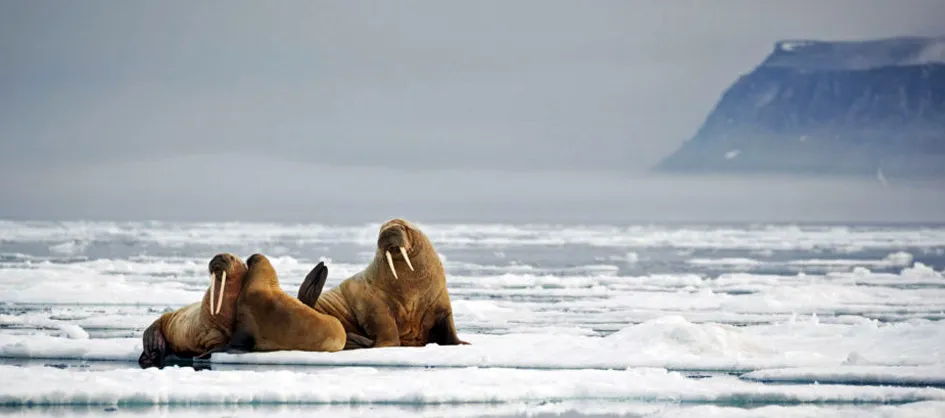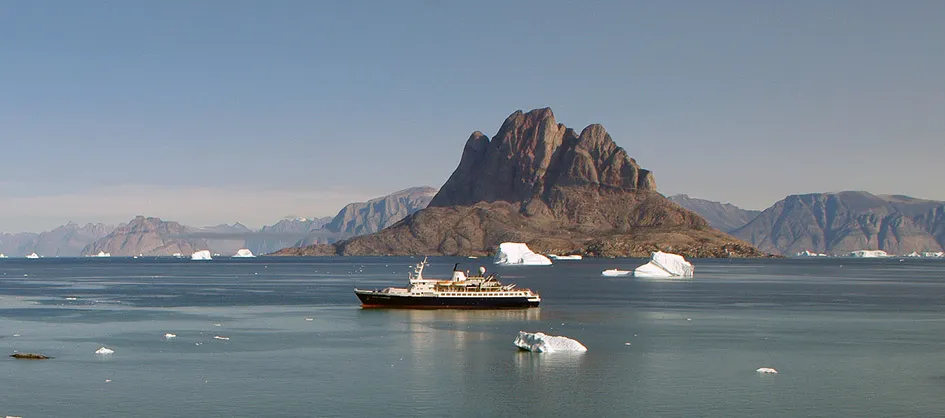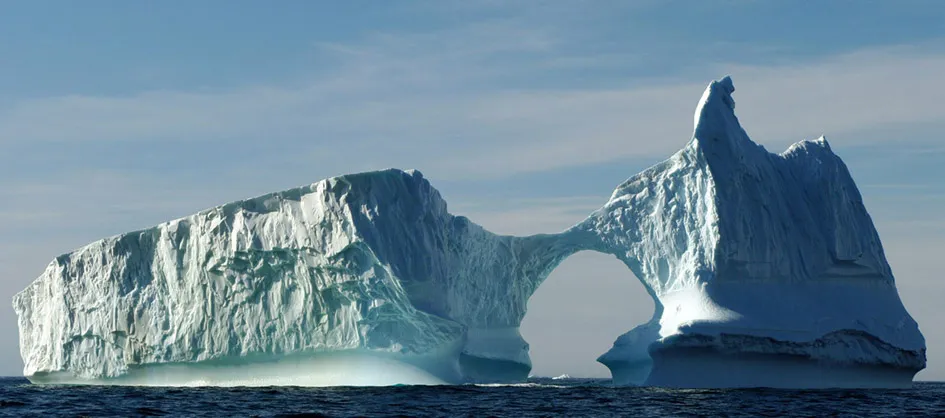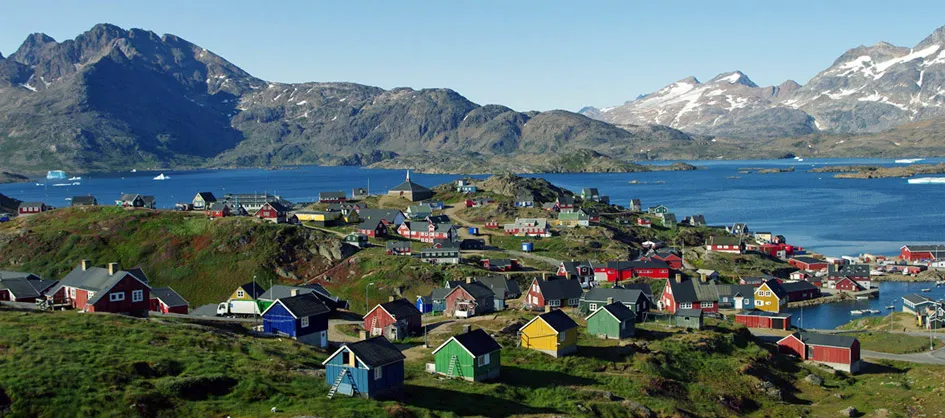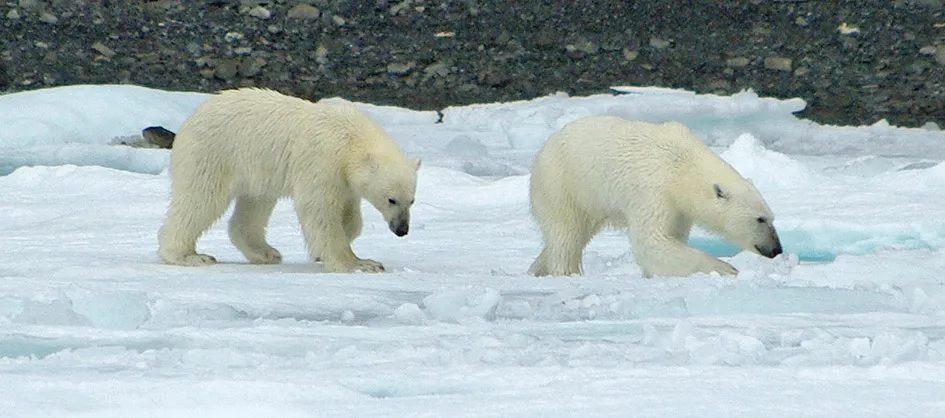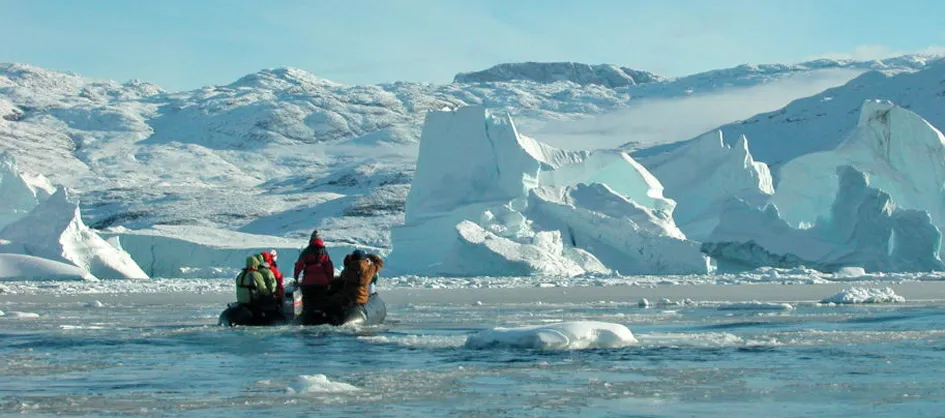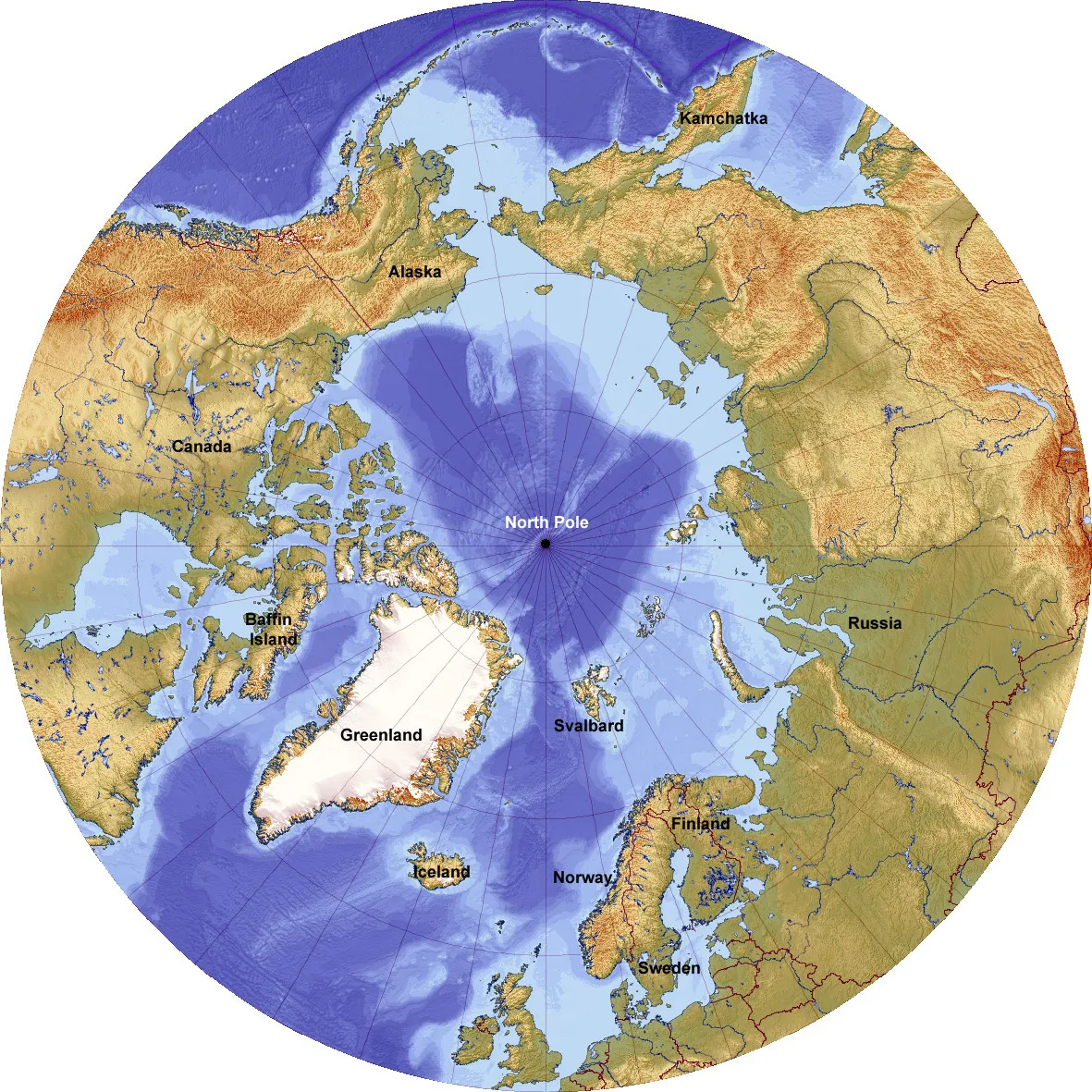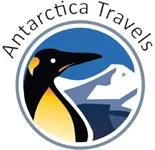 Arctic
Travel Guide
Arctic
Travel Guide
where to go, when to go
what to expect
Cruise departures in 2025 to the Arctic, from
$4,300
Single and multi-country itineraries, 8-29 days
With Cool Antarctica and Antarctica Travels
Information:
Arctic travel basics |
more travel details |
request contact
| clothing |
boots
Regions:
Canada |
Greenland |
Iceland |
Svalbard and Spitsbergen |
Antarctica
The Arctic is a familiar and yet an alien place. It is recognizable as the place you imagine when you think of winter and as the home of polar bears, reindeer (caribou), arctic foxes and wolves. It is huge almost boundless with wide-skies, a spectacularly scenic wilderness where you will find glaciers, mountains, icebergs and rolling green tundra. There is a rich history of exploration and ancient habitation by many groups of endemic peoples.
The Arctic is centered on the North Pole in the Arctic Ocean much of which is frozen, obviously more so in winter than summer. This is fringed by Canada, Greenland, Europe and Russia. The geography makes it relatively easy to access the Arctic from many points.
We can help guide you through the options for Arctic travel, where to go, how long to spend there, the specific itinerary and the level of comfort or luxury you are looking for. Guided by ice and wildlife experts, and seasoned seafarers who will make the most of the planned journey while taking opportunities that present themselves along the way, we can ensure your Arctic visit is as memorable as it can be.
We often forget
that we are nature. Nature is not something separate from us.
So when we say that we have lost our connection to nature, we
say that we have lost our connection to ourselves.
Andy Goldsworthy
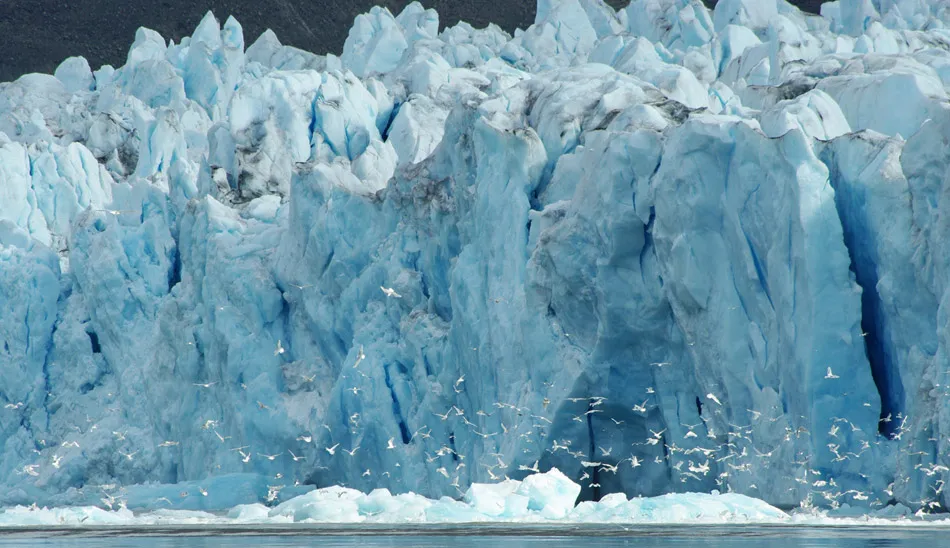
Glacier front in Svalbard
How much does it cost?
From around USD $6,000 for a cruise place in a twin cabin, (triples or quads may be available for less) this does not include the price of air fare and other associated costs to and from your point of embarkation and return. There are many price points up to USD $50 000 and even beyond. Solo travellers can pay a supplement for a private cabin or can be paired with another traveller of the same gender in a shared cabin at the standard shared cabin rate. Of course the higher prices get you a longer trip and more luxurious cabins on more luxurious vessels.

A vast open vista in the Canadian
archipelago, cruise ship edge of picture, right
$8,000 - $12,000 per passenger for a 8-14 day cruise is a reasonable price to expect and will give a good choice of trips, ships and cabins.
It is possible to arrange Arctic trips as a budget traveller (relatively speaking) organizing flights, accommodation in a hostel or camping and daily activities yourself. Be aware however that as the Arctic has to import much of its food and supplies from elsewhere, that prices of many things are more expensive than you would expect at home, this applies in ordinary stores as well as at tourist facilities. Cafes and restaurants are not so common and can be an expensive option, even relatively modest establishments. Land based tourism in the Arctic isn't so developed, scheduled trips and events may not run unless there are enough people to make it worthwhile for the operator which may not happen even in the peak season, travelling as a group can be more successful.
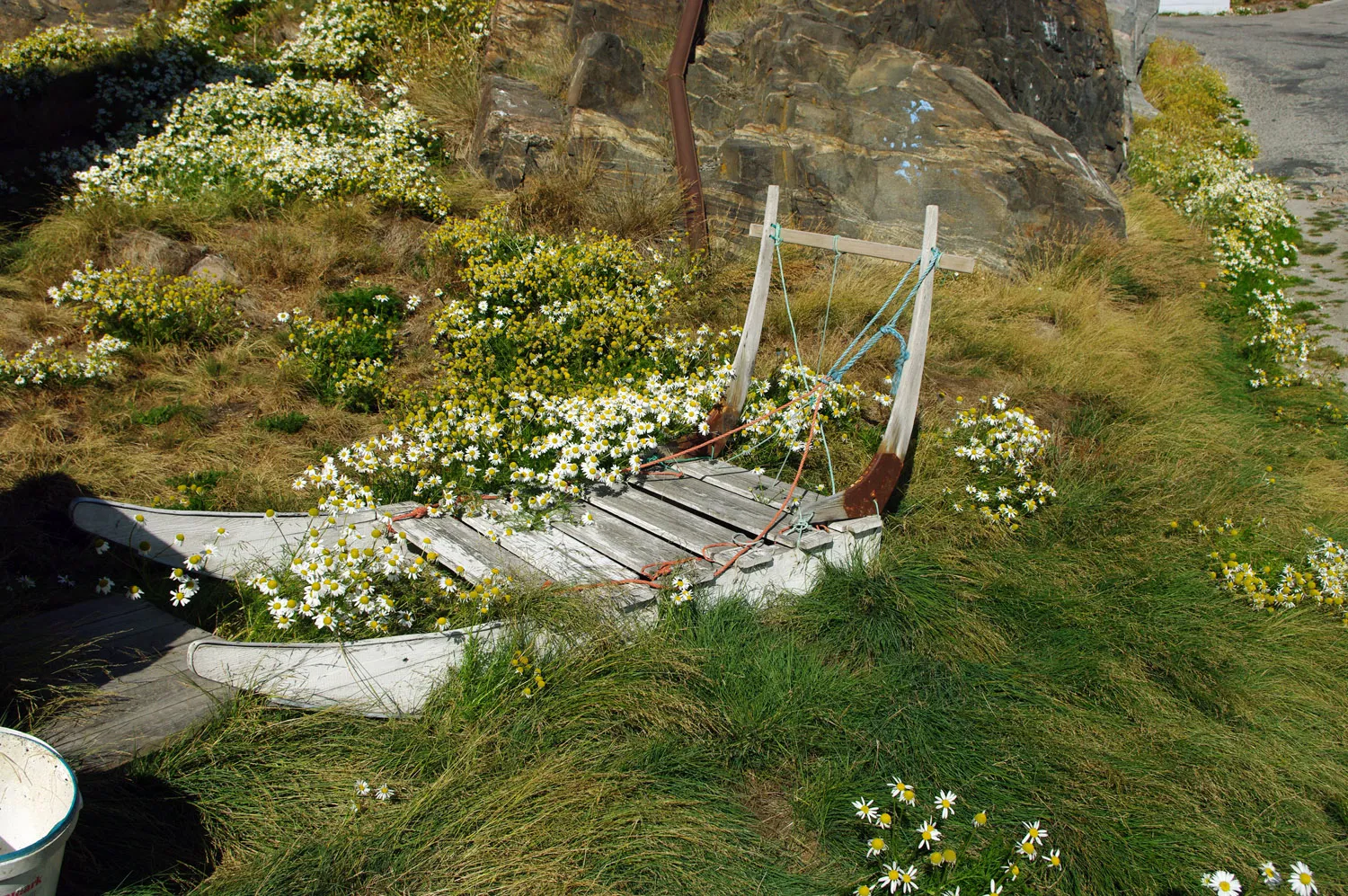
A sled patiently waits out the Arctic
summer surrounded by wildflowers
All Inclusive:
There are generally very few extras to allow for on an Arctic cruise, they are "All Inclusive" in terms of the great majority of needs and requirements, typically trips are from port-to-port.
Usually included in all trips
- Accommodation and all meals on board.
- Snacks, coffee and tea.
- Programme of lectures on the ship and guidance ashore by an expedition team.
- Daily shore excursions, hiking program.
- Transfers from hotel to ship on the day of departure and to airport at end of the cruise.
- Miscellaneous port fees, landing charges and taxes.
May be included in some trips
- Loan of waterproof boots for landings.
- Complimentary parka or wind/water resistant jacket to keep.
- Some alcoholic and soft drinks.
- Photography program.
- Depending on the start and end points there may be a required charter flight to/from an isolated airport, this may be included or might be a required extra.
Usually not included
- Flights to port of departure and back, transfer at port to hotel.
- Laundry.
- Personal communications, phone calls, email, fax, internet use.
- Optional excursions where available, kayaking, snow-shoeing, kayaking etc.
- Medical and evacuation insurance (compulsory).

The town of Tasiilaq in east
Greenland
When and where do trips take place?
Arctic trips by ship around ice-free coastal zones take place between spring and late summer, a five month period from May to September. In high summer in the high Arctic you may have constant daylight over the whole period of your trip.
Lower temperatures, shorter days and thickening sea-ice from October to April mean that trips by sea and a little later, by land come to an end. Even during the summer sea ice can be unpredictable and the itinerary will vary according to what is possible if ice prevents the planned itinerary from taking place. There are a number of icebreakers that operate tourist cruises in the Arctic so allowing them to go places that other cruise ships cannot.
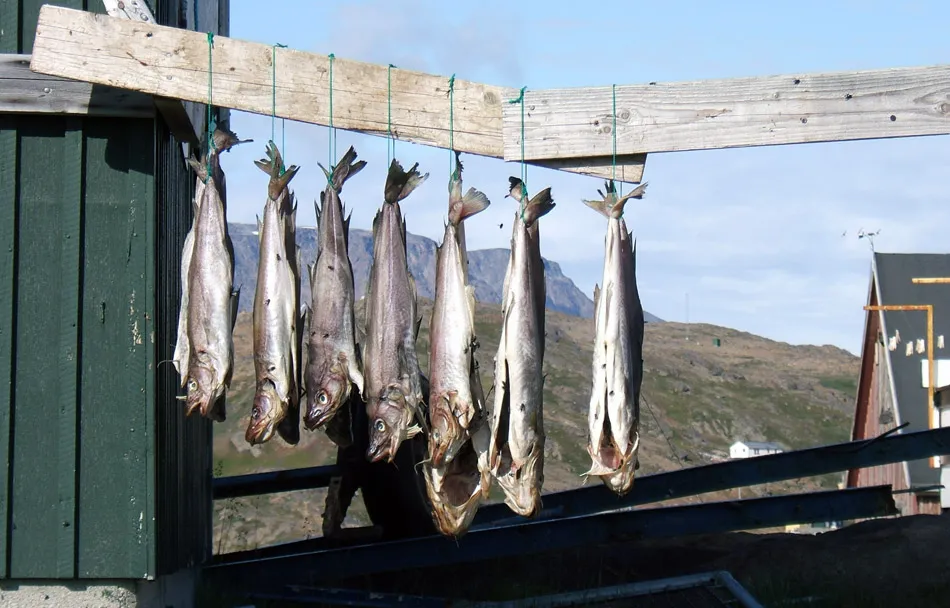
Drying fish is a traditional practice
for many Arctic cultures
Temperature Range; May to August - 2C to + 12C / 28F to 54F average daily high and low
May & June (Late Spring / Early Summer)
- Polar bears will still be hunting seals on the ice floes.
- Caribou migrations.
- Winter snow and ice still in abundance especially on the mountains. The scenery is white, clean and pristine with pack ice and icebergs.
- Salmon are returning from the sea in Alaska
July and August (Mid / Late Summer) - usually the Arctic's warmest months.
- Arctic flowers in full bloom, best in July.
- Longer days create great light conditions and fabulous photo opportunities at midnight.
- Receding ice allows for more exploration.
- West-Greenland whale watching trips underway now.
- Wildlife sightings their height, especially birds.
- Best time for beluga whales in Hudson Bay, Canada.
- Best time for seeing polar bears on Svalbard.
- North-west passage most accessible.
September (Early Autumn / Fall)
- Retreating pack ice allows better access to eastern Greenland's spectacular Scoresby Sund.
- Autumnal colours appear across the tundra.
- Shortening daylight makes it easier to see the Northern Lights, the Aurora Borealis, it is also more likely to occur around the autumnal equinox in September.
Tourism in The Arctic
Defining the region. The Arctic is often considered to be the area north of 60 degrees.
The Arctic consists of an ocean which includes the North Pole surrounded by land. The Arctic Circle where conditions of 24 hours of daylight can be experienced in the summer months is relatively easy to reach, more so than the Antarctic Circle. Where most Antarctic trips don't reach the Antarctic Circle, many Arctic trips can be spent wholly or partially inside the Arctic Circle.
The Arctic covers of part of several countries with a total of around 4 million permanent residents. There are some large towns and cities, the largest is Murmansk in Russia with about 295,000 inhabitants. Many of the people are spread rather more thinly in smaller towns and communities. There are also many large habitations near to the Arctic with air and sea ports which makes for easy access.
This human population is the biggest contrast between the two poles, the Arctic has been inhabited by people for many thousands of years whereas the Antarctic has never had any permanent residents. There are many groups of Arctic peoples such as the Inuit, Chukchi, Sami, Yupik, Buryat and Inupiat amongst others each with their own traditions and cultures.
The Arctic is a geographic rather than a political region and documentation or visas may be required depending on your country of origin for all or any of the countries you may visit during your Arctic trip.
Where do trips leave from?
There are a number of easy access points to the Arctic all around the northern hemisphere. Flights are regular and frequent, as affordable as many other routes and often direct.
Northern Europe
One of the easiest places from which to access the Arctic due to the closeness to many centers of population and the frequency of flights to Arctic travel hubs. The gulf stream that warms the west coast of Europe keeps the North Atlantic largely ice free including the British Isles, Iceland, the coast of Norway and even as far north as the Arctic Ocean around Svalbard in the summer months well inside the Arctic Circle. Cruises around the European section of the Arctic are very popular as shipping is less likely to be affected by sea-ice than other regions. Iceland, Greenland, Norway, Finland, Sweden, and Svalbard are all good starting points to experience the Arctic.
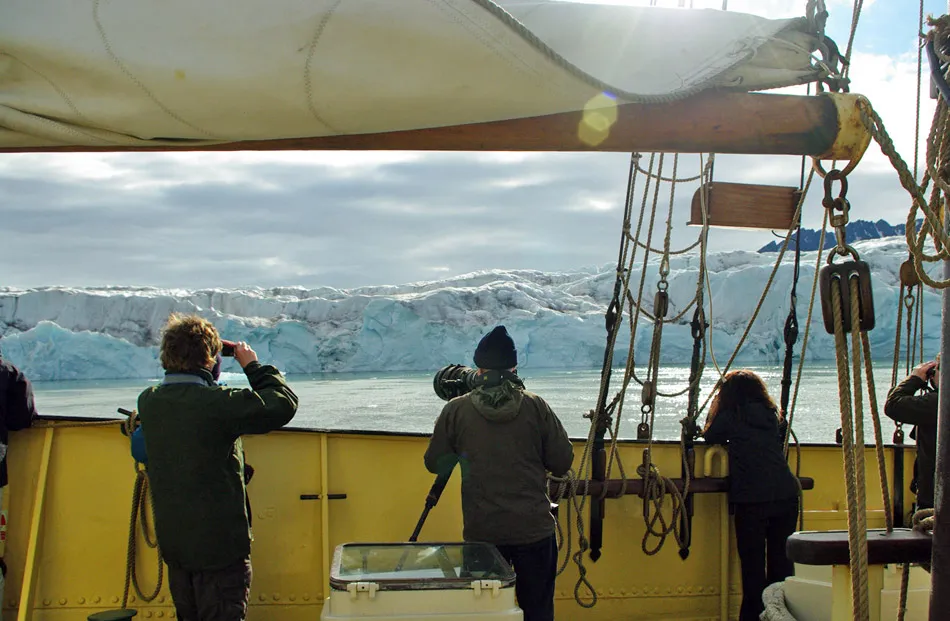
Cruising along a glacier front is
breathtaking experience, Svalbard
North America - Canada
There are many cruises that start or end in the Canadian Arctic these often require charter flights to / from major airports such as Calgary or Toronto. A number of smaller habitations such as Resolute, Iqaluit and Cambridge Bay have airports that can transit passengers from larger cities to waiting cruise ships. In the East, Newfoundland and Quebec can be the start or end points for cruises. The charter flight will be arranged as part of the cruise, it may be inclusive or an additional cost.

An ice-strewn beach in the Canadian
Arctic
What kind of experience?
A trip to the Arctic is one that you should plan in advance more so than to many places in the world. Getting a ticket and deciding what to do when you are there could lead to some disappointment. There aren't enough land based tourists reliably arriving for many short-booked trips and experiences to be offered. The Arctic is the opposite of those places you have been with touts trying to get you to go on a boat trip leaving in half an hour. To make the most of travelling to the Arctic plan your activities in advance as far as possible, a cruise fulfills the brief perfectly.
Many Arctic cruises aren't like what may come to mind when you think of a cruise to warmer climates with onboard entertainment the priority and shore visits less important, though the larger the ship, the more likely there is to be entertainment provided.
You will find a number of very well informed and experienced guides on many Arctic trips who will give lectures on a regular basis about various aspects of Arctic history and natural history.
More details about visiting the ArcticEarly Booking Offers - Summer 2025 - Arctic Cruises
Arctic Circle, Jan Mayen, Svalbard
27th May - 8th June 2025
13 days / 12 nights
From $6,577
was $9,395
Best Svalbard Expedition Cruise
15th - 26th June 2025
12 days / 11 nights
From $8,895
was $12,205
West Svalbard and Polar Ice Edge Cruise
7th - 16th June 2025
10 days / 9 nights
From $7,495
was $10,306
The Northwest Passage Expedition
25th Aug - 9th Sept 2025
16 days / 15 nights
From $21,670
was $25,495
Svalbard / Spitsbergen - Sample Arctic Cruises - 2025 |
|||||
|---|---|---|---|---|---|
| Trip | Departures 2025 | Highlights | Prices USD* | Days | Departure |
| North Spitsbergen | Jun-Jul 7 trips |
Historic sites, sea-ice, glaciers, wild flowers, lush tundra, walrus, polar bears, reindeer, huge sea bird colonies | 4.3K-9.5K | 8 | |
| Spitsbergen Explorer | May-Aug 16 trips |
7K-18K- | 10-12 | ||
| Svalbard longer trips | May-Aug 5 trips |
10.5K-40.5K | 14 | ||
Greenland - Sample Arctic Cruises - 2025 |
|||||
| Adventures in Northeast Greenland | Aug-Oct 4 trips |
Some of the last unspoiled wilderness areas on the planet, spectacular scenery, Inuit culture, historic sites. Fjords, mountains and ice. | 10K-17K | 10 | |
| In the Wake of Eric the Red - Iceland to Greenland | Jul-Aug 2 trips |
The course of Norse settlers, Disko Bay, glaciers, icebergs, Inuit culture, Ilulissat Icefjord UNESCO site, Nuuk. | 8K-18K | 12 | |
| East Greenland, Scoresby Sund | Aug-Sept 2 trips |
World's largest and deepest fjord system, a good time of the year to see the Northern Lights. | 5.6K-10.6K | 10 | |
Canada - Sample Arctic Cruises - 2025 |
|||||
| Northwest Passage east, Canada and Greenland | Aug-Oct 6 trips |
Historic Canadian and Greenlandic sites, abundant wildlife, rich Inuit culture and dramatic icy landscapes. Polar bears, whales and walrus, tundra hikes. | 11K-43K | 16-17 | |
| Complete Northwest Passage, Greenland, Canada and Alaska | Aug-Sept 1 trip |
West Greenland, Baffin Island, NW passage to Alaska. Ilulissat Icefjord, stunning geology and fjords, Beechey Island, Franklin's expedition, musk ox, polar bears, beluga , walrus and narwhal. | 35K-73K | 29 | |
| Trip | Departures 2025 | Highlights | Prices USD* | Days | Departure port |
Iceland - Sample Arctic Cruises - 2025 |
|||||
| Iceland Roundtrip / Circumnavigation | Snaefellsnes Peninsula National Park bird cliff, geologically active region, cross the Arctic Circle, Heimaey. | 5K-17K | 8 or 9 | ||
| In the Wake of Celts and Vikings | June 1 trips |
Ireland to Iceland via Scotland, Shetland and Faroe. Callanish Stones, Lerwick, Torshavn, most of the Icelandic coast. | 8K-17K | 13 | |
| Jewels of the Arctic. Iceland, Greenland and Svalbard. |
Jul-Aug 3 trips |
Wildlife, musk ox, arctic hare and whales, Scoresby Sund the world's largest national park and fjord system, Glaciers, mountains and polar bears. | 15K-40K | 13 or 15 | |
* Prices are per person. the lowest price is usually for triple occupancy in a basic cabin.
Options such as kayaking are usually booked when the cruise is booked, they may be at additional cost and have limited availability - it may be too late once the cruise has started.
Contact me about my trip to the Arctic!
Please complete the form
and
an Arctic Travel Expert will contact you
Departures from late May to September
Our partner company, Antarctica Travels, passionately help people to reach their ultimate destination.
All enquiries will be answered from our office in Patagonia, Argentina.
Dozens of trips
Unique
combinations of ship + itinerary
Variety of ships - 108 to 199 passenger capacity
$4,300 to $72,495
7 to 29 days
Please note - we cannot help directly to find employment, please do not use this form to request any other information than for tourist trips
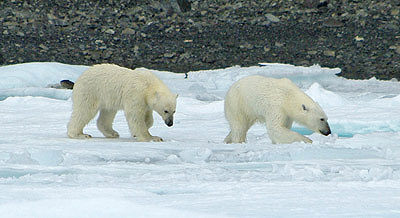
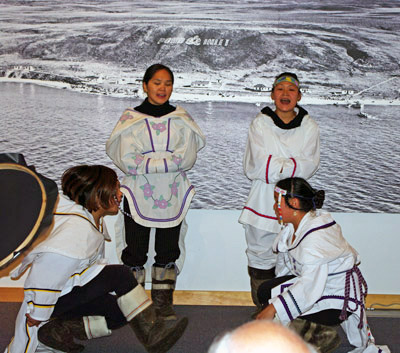
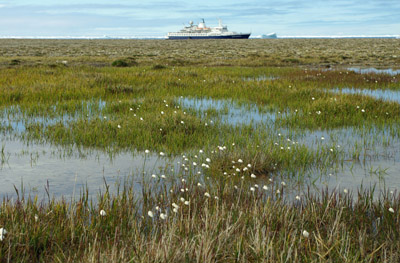
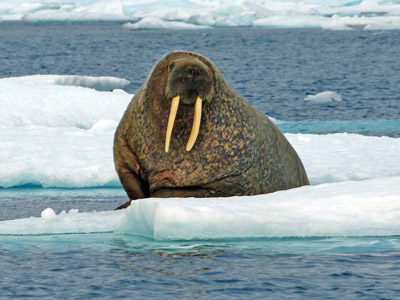
Picture credits: Map of the Arctic - maps used courtesy of Uwe Dedering under the Creative Commons Attribution-Share Alike 3.0 Unported license


